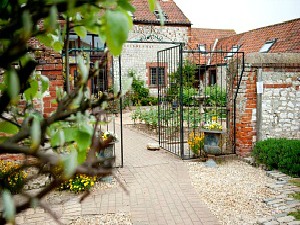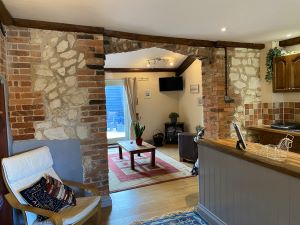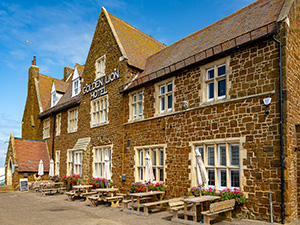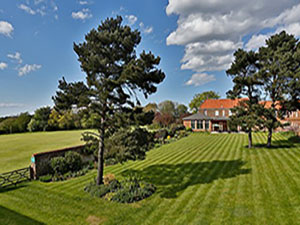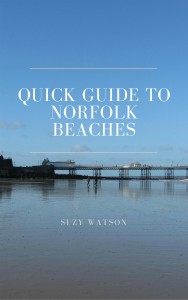- Explore Norfolk
- Wildlife Reserves
- Winter migrating birds in Norfolk
Winter Migrating Birds in Norfolk; How To Spot Them
Winter migrating birds in Norfolk make it one of Britain's most spectacular bird-watching destinations. Thousands of migrating birds make Norfolk's coastline and wetlands their seasonal home, and we’re extremely lucky to be able to watch this incredible yearly spectacle from some of the best Nature Reserves in Norfolk.
The dramatic arrival of Pink-footed Geese and the graceful Whooper Swans bring you unmatched wildlife viewing opportunities throughout the winter months.
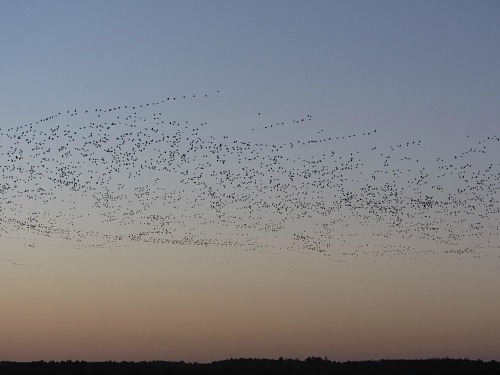 The Pink Footed Geese At Sunrise
The Pink Footed Geese At SunriseWhether you’re a bird-watching enthusiast or not, you can’t help but be mesmerised by all these winter migrating birds that make Norfolk their home during the colder months.
There are some excellent bird-watching locations in Norfolk.
The RSPB North Norfolk reserves at Titchwell, Cley Marshes and Snettisham serve as perfect viewing points for these many waders and wildfowl.
Holme Dunes also offers excellent spotting opportunities with its coastal habitats, reed beds, and mudflats, which create ideal conditions to watch both resident and migrating species.
Understanding Winter Bird Migration Patterns
Norfolk's winter bird migration really does showcase one of nature's most remarkable phenomena.
Thousands of birds make the extraordinary trip from their northern breeding grounds to find sanctuary in Norfolk each year. I find it fascinating that these migration patterns reveal the complexity of this natural spectacle and I continue to marvel at nature year on year.
Why Birds Migrate To Norfolk In Winter
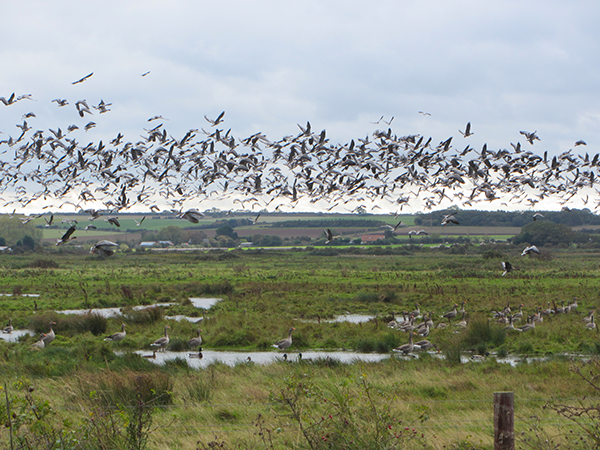
Norfolk attracts these wintering birds because of its mild climate and rich food sources. Birds that breed in northern regions like the tundra (treeless areas) in Iceland, make their way to Norfolk when winter arrives due to the variety of landscapes which range from coastal areas to inland wetlands, and gives these winter visitors perfect conditions to thrive in the cold months.
It’s primarily the pink-footed geese, swans and winter thrushes that arrive and stay in Norfolk during the winter.
Common migration routes to Norfolk
Birds are very clever!
Winter migrating birds in Norfolk know where to go, but why don’t they get lost?
This is a question I always ask myself when I look up to the sky and see incredible V-shaped formations.
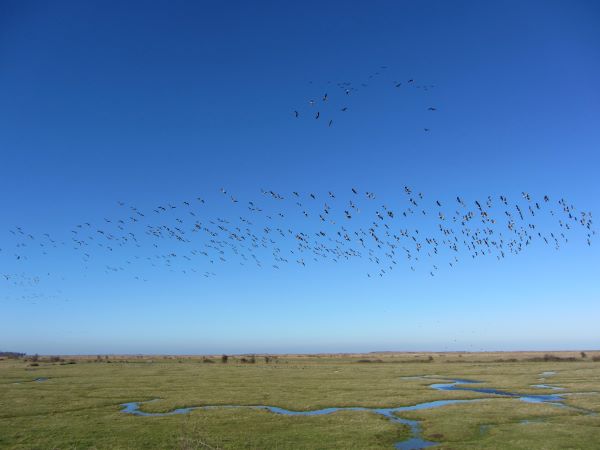 Brent geese coming to land on the water meadows
Brent geese coming to land on the water meadows- They follow each other
- they navigate using the sun and stars and the magnetic field
- they also follow physical landmarks such as mountains and rivers.
It’s extraordinary and they do this year after year. And they honk and honk – for Norfolk residents, it’s the best noise of the year – in my opinion anyway!
These natural routes help them save energy and also increase their chances of survival. Norfolk has migrating birds from around the world, so different species reach Norfolk through specific paths:
- Northern Route: Birds from Scandinavia and Arctic regions follow the North Sea coastline
- Eastern Route: Migrants from Eastern Europe cross the North Sea at its narrowest points
- Continental Route: Birds from central Europe travel northwest across the Channel
- Arctic Route: Species from Iceland and Greenland follow the eastern Atlantic flyway which is a migration route that’s used by over 90 million birds annually – wow!
Top Winter Birding Hotspots in Norfolk
Norfolk's perfect winter bird-watching spots offer incredible wildlife encounters. You can find spectacular seasonal bird life at several locations.
Coastal reserves (Cley, Titchwell, Holkham)
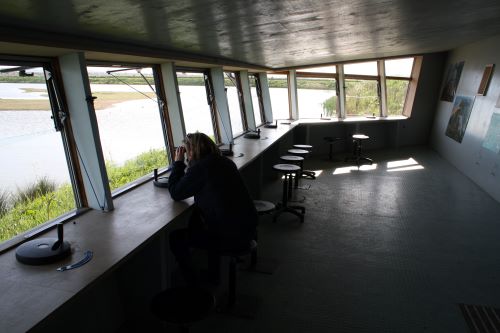
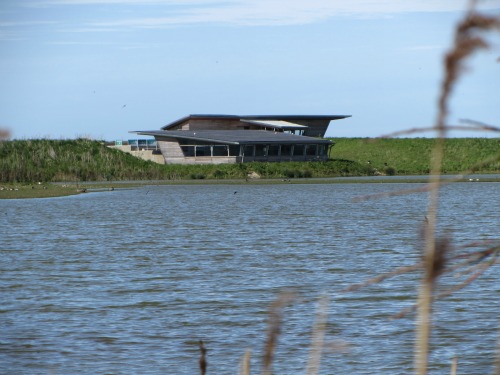
RSPB Titchwell Marsh delivers an exceptional winter birding experience with its extensive reed beds and freshwater lagoons which create perfect viewing conditions. The reserve has well-laid-out paths that take you to strategically placed hides where you can watch wildlife while staying protected from winter weather!
These are some highlights that make each reserve unique:
- RSPB Titchwell has Freshwater lagoons, reed beds, Marsh harrier roosts and wintering wildfowl
- RSPB Snettisham for its Wader Spectacular and Pink Footed Geese
- Holkham Nature Reserve has pine woods which are shelter for smaller birds and grazing marshes which are very popular with the thousands of Pink-footed geese and the white-fronted geese
- NWT Cley Marshes has hides overlooking scrapes that draw an impressive range of waders along with Snow bunting, Twite and Shorelark
Note that you need to check tide times before visiting some of the coastal reserves because the movements of the birds are most spectacular during high tides.
Accommodation suggestions
For Titchwell RSPB site, try Briarfields Hotel in Titchwell which is a short 10 minute walk to the reserve.
For Cley Marshes Nature Reserve take a look at Smugglers B&B or self-catering in Sheringham
For Snettisham RSPB reserve, check out:
- mYminiBreak self-catering cottages or B&B
- the Golden Lion Hotel in Hunstanton, or
- Knight’s Hill Hotel in King’s Lynn
For Holkham Reserve, you can read more on The Crown in Wells-next-the-Sea here
Inland lakes and broads
Hickling Broad gives you a different viewpoint on winter bird watching. This expansive body of water and its surrounding reed beds create perfect conditions for:
- Marsh harriers gathering for spectacular winter roosts
- Bearded tits move through the reed beds
- Water rails skulking in the margins
- Occasional visits from great white egrets
Numerous species of winter migrating birds in Norfolk choose Hickling Broad for their winter home.
If you visit Strumpshaw Fen you might even spot bean geese arrivals.
Winter Migrating Birds In Norfolk To Follow
Norfolk's coast becomes a haven for countless migrant birds in winter and create some of the most spectacular wildlife displays in Britain. Here are the amazing species you can spot during your winter bird-watching adventures.
Wild geese (Pink-Footed and Brent)
Pink-Footed Geese create one of Norfolk's most spectacular natural shows. The dawn sky fills with up to 40,000 birds that call out as they move between roosting and feeding spots. These amazing birds represent more than a third of their global population and reach peak numbers during January and February.
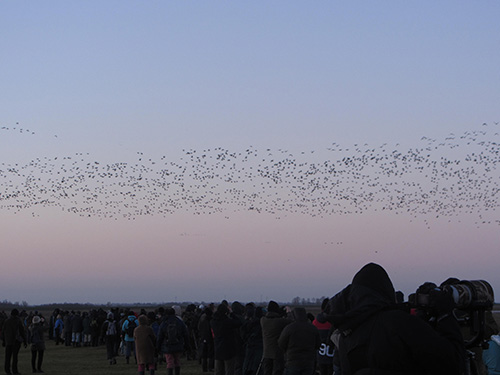
The best chances to spot Pink-Footed Geese are:
- Early morning flights from coastal roosting areas to feeding grounds
- Their return journey to protected sleeping spots at dusk
- Large groups feeding in fields after sugar beet harvest
Winter migrating birds in Norfolk also include the dark-bellied Brent Geese which bring a different kind of winter magic to Norfolk. These smaller birds start showing up in late autumn. Nearly 100,000 of them choose UK coasts as their winter home. You can spot them:
- Munching on eelgrass across coastal mudflats
- Staying close to family groups in saltmarshes
- Sometimes moving inland to feed on newly planted winter crops
Swans (Whooper, Bewick's)
Welney Wetland Centre becomes one of the most important winter habitats for swans. You can watch the swans being fed at 3.30pm every day at Welney from 1st November to 28th Febraury.
Knot, Dunlin and Oystercatchers
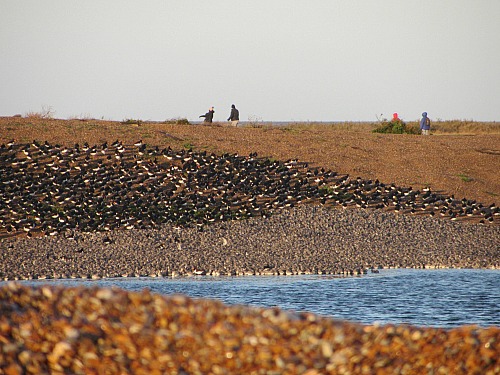
All of these waders create mesmerising swirling flocks around The Wash and can be seen in huge numbers at RSPB Snettisham.
Norfolk's winter bird-watching scene gives you amazing chances to see these seasonal birds in their natural habitats. The Snettisham Wader Spectacular truly is an incredible sight and one that you need to see to understand how amazing it is.
Come and see Norfolk’s Wintering Birds
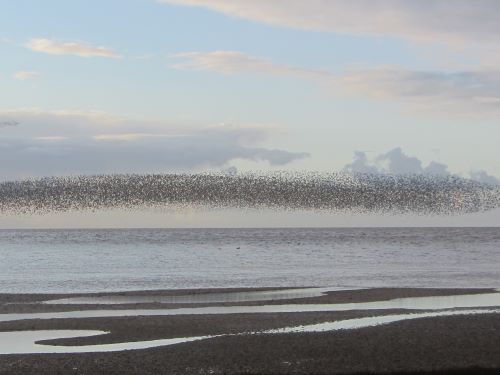
Norfolk offers some of Britain's most spectacular winter bird-watching experiences.
Thousands of migrating birds leave their Arctic breeding grounds to find shelter along the coastline and the wetlands here in Norfolk. They literally turn the varied landscapes of the salt marshes, water meadows and cropped fields into natural wildlife galleries. Massive flocks of Pink-footed Geese and graceful Whooper Swans dominate the scene.
Many of Norfolk's nature reserves provide excellent viewing facilities that welcome bird watchers of all experience levels. You can see more detailed information about each nature reserve here to help plan your winter birding trips effectively.


